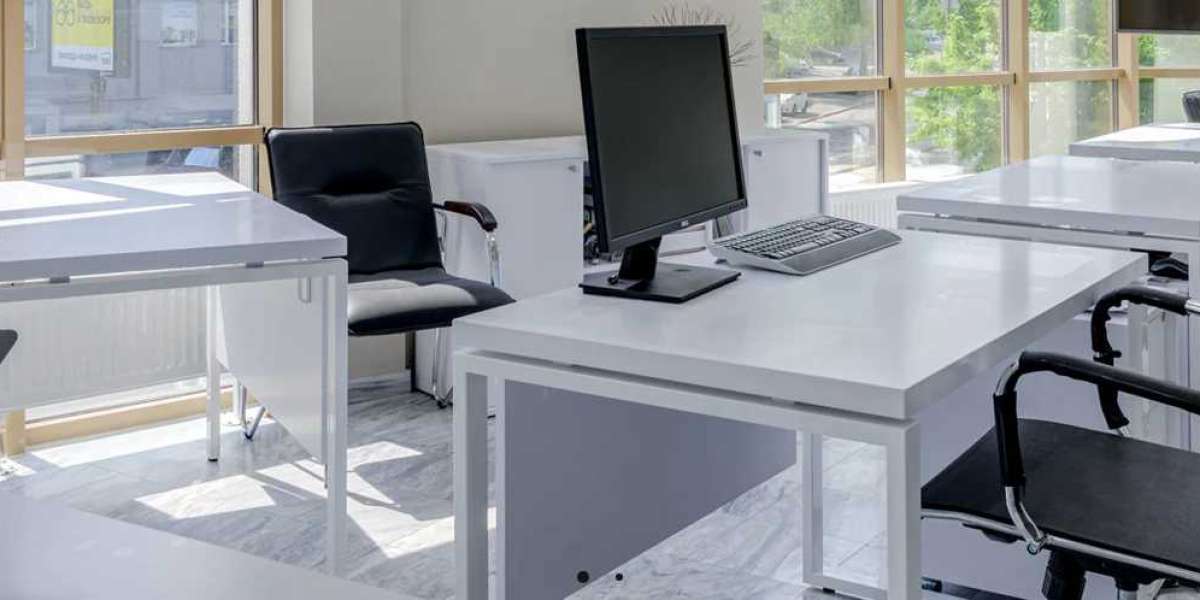The world of office furniture design is rapidly evolving, driven by changes in work culture, technology, and environmental considerations. As we look to the future, several key trends are set to shape the next generation of office furniture. Here’s what’s next in office furniture design:
1. Emphasis on Flexibility and Adaptability
- Trend: The rise of hybrid work models has increased the demand for flexible furniture that can adapt to different work styles and environments. Modular and reconfigurable furniture systems allow companies to easily adjust their office layouts to accommodate both in-person and remote workers.
- Example: Workstations that can quickly transform from individual desks to collaborative tables or lounge areas are becoming more popular, allowing offices to be reconfigured as needed.
2. Integration of Smart Technology
- Trend: As technology continues to advance, office furniture is becoming smarter. Integrated charging stations, IoT-enabled furniture, and furniture that can monitor and adjust to user preferences are becoming more common. These innovations aim to enhance productivity and comfort by seamlessly integrating technology into the workspace.
- Example: Desks with built-in wireless charging pads, smart chairs that adjust posture in real-time, and meeting tables with embedded touchscreens are examples of how tech integration is revolutionizing office furniture.
3. Focus on Sustainability and Eco-Friendly Materials
- Trend: The push for sustainability is driving the use of eco-friendly materials and manufacturing processes in office furniture design. Companies are increasingly seeking furniture made from recycled or renewable materials, as well as products that are durable and designed for long-term use.
- Example: Furniture made from bamboo, reclaimed wood, or recycled plastics is gaining popularity, as are products certified for low environmental impact by organizations like LEED or BIFMA.
4. Biophilic Design Elements
- Trend: Incorporating natural elements into office furniture is a trend that’s expected to grow. Biophilic design, which aims to connect people with nature, can improve mental well-being and productivity. Furniture that incorporates natural materials, patterns, and living elements like plants will become more prevalent.
- Example: Desks and tables with integrated planters, natural wood finishes, and furniture designs inspired by organic shapes are examples of biophilic elements in office furniture.
5. Health and Well-Being-Centered Design
- Trend: The focus on employee health and well-being is leading to the development of furniture that supports both physical and mental health. Ergonomic design remains a key focus, but there’s also a growing emphasis on furniture that promotes movement, reduces stress, and enhances comfort.
- Example: Sit-stand desks, ergonomic chairs with advanced lumbar support, and relaxation pods that offer a space for employees to unwind are all part of this trend.
6. Personalized and Customizable Workstations
- Trend: As companies strive to create more inclusive and personalized work environments, customizable furniture that allows employees to tailor their workspace to their specific needs is becoming more important. This trend is particularly relevant in hybrid and flexible work settings.
- Example: Desks with adjustable heights, customizable storage solutions, and furniture that can be personalized with different colors, materials, and configurations are gaining traction.
7. Minimalist and Space-Saving Designs
- Trend: As office spaces become more compact, there is a growing demand for minimalist and space-saving furniture designs. Multifunctional furniture that maximizes space without sacrificing functionality or aesthetics is increasingly popular.
- Example: Desks that double as storage units, foldable or stackable chairs, and modular shelving systems that can be reconfigured to fit different spaces are examples of this trend.
8. Collaborative and Social Spaces
- Trend: The design of collaborative and social spaces is evolving to support more dynamic and informal interactions. Furniture that encourages collaboration, such as communal tables, flexible seating arrangements, and lounge areas, is becoming a staple in modern offices.
- Example: Large communal tables, moveable whiteboards, and modular seating that can be arranged for impromptu meetings or social gatherings are key elements in these spaces.
9. Acoustic Solutions in Furniture
- Trend: As open-plan offices continue to be popular, the need for acoustic solutions has grown. Furniture designed with sound-absorbing materials or features that help create quiet zones is becoming essential to reduce noise and improve focus.
- Example: Acoustic panels integrated into desks, soundproof pods, and chairs with high backs designed to minimize ambient noise are examples of how furniture is addressing acoustic challenges.
10. Aesthetic and Brand Alignment
- Trend: Office furniture is increasingly being used to reflect a company’s brand and culture. Custom designs, color schemes, and unique furniture pieces that align with a company’s identity are becoming more common as businesses seek to create cohesive and inspiring work environments.
- Example: Furniture that incorporates brand colors, logos, or custom designs that reflect the company’s values and mission helps create a unified and motivating workspace.
Conclusion
The future of office furniture design is being shaped by a blend of technology, sustainability, health consciousness, and flexibility. As work environments continue to evolve, furniture will play a critical role in creating spaces that are not only functional but also enhance well-being, collaboration, and productivity. Companies that stay ahead of these trends will be better equipped to create workspaces that meet the needs of their employees and support their business goals.








